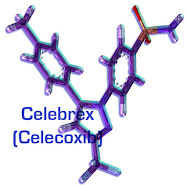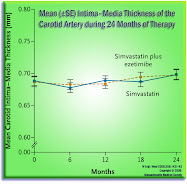 Yesterday afternoon, there was quite a bit of parlor-gaming among Constitutional law professors (and other Court-Kremlinologists!) -- about whether Chief Justice Roberts might have changed his vote, at some rather late hour, in yesterday's Obamacare decision. The strongest evidence I personally saw, for that idea, was Justice Scalia's completely over-the-top, unbecoming, and uncourtly read-out of his dissent, on Monday, in the Arizona SB 1070 case. His sense of a truly emotional betrayal seemed raw and bleeding -- and well-beyond the small affront he had suffered in being on the losing side in the Arizona immigration case. So I speculated that Scalia was venting "by proxy" -- about something else -- something much bigger.
Yesterday afternoon, there was quite a bit of parlor-gaming among Constitutional law professors (and other Court-Kremlinologists!) -- about whether Chief Justice Roberts might have changed his vote, at some rather late hour, in yesterday's Obamacare decision. The strongest evidence I personally saw, for that idea, was Justice Scalia's completely over-the-top, unbecoming, and uncourtly read-out of his dissent, on Monday, in the Arizona SB 1070 case. His sense of a truly emotional betrayal seemed raw and bleeding -- and well-beyond the small affront he had suffered in being on the losing side in the Arizona immigration case. So I speculated that Scalia was venting "by proxy" -- about something else -- something much bigger.
Could it have been that he thought he had the majority's opinion in the ACA case -- only to learn that the Chief Justice was going to agree with the liberals that it must be a tax -- and thus must be upheld? We may never know.
But throughout yesterday afternoon, similar such theories raged -- here and here are two fine examples (citing how scantly each competing Justices' group opinion addresses the other group's opinion -- and the Chief's).
But now, in the colder, calmer morning light -- as all things go from being luminous -- to clear(er), I think Orin Kerr has the best explanation. Do go read it all, but here is the meat of it:
. . . .So it might have happened like this. The Justices voted at conference and there were five votes to uphold the mandate on the tax argument and at least five votes to strike down or modify the medicaid expansion. The first group is Roberts plus the liberals, and the second group is Roberts plus the conservatives. Roberts is the swing vote in this case and this is the biggest case of his time on the Court, so he quite naturally assigns the opinion to himself. Roberts doesn’t know how many votes his opinion will get, and he tries to write in a way that might persuade some unlikely votes to join him. Maybe Justice Kennedy will change sides and make the case 6-3, which would avoid the dreaded 5-4 vote. Or maybe he can get some liberal votes to join the section blocking the medicaid expansion.To write the opinion, Roberts needs to cover a lot of ground — anti-injunction act, tax power, medicaid expansion, etc. Roberts also writes on the Commerce Clause issue, even though it’s not needed to reach the result. Why include that section? Perhaps Roberts thinks that his middle-ground opinion that includes a section agreeing with the mandate challengers on the Commerce Clause might pick up Kennedy’s vote. Or maybe Roberts just wants to weigh in on the most high-profile legal issue of the year, which he happens to care a lot about. He’s also the fifth vote on the Commerce Clause issue and everyone else is writing on it, so he wants to make his views known. Either way, he writes a proposed majority opinion covering all the major issues.
After Chief Roberts circulates his majority opinion, the conservative dissenters decide to write a joint opinion in response. Why a joint opinion? It took Roberts a while to circulate his proposed majority opinion, so the time pressure is particularly intense on the dissenters. The dissenters have a lot to issues to cover and very little time in which to say it, and making it a joint effort allows them to pool resources. They divide the pieces with different Justices working on different issues. The result is a 65 page opinion that is a bit of a patchwork, with different parts by different Justices having different lengths and some portions not really necessary (like severability) included. Some parts may have been drafted before the Roberts opinion circulated, which might explain why parts are duplicative of the Roberts opinion. But the joint dissent is a genuine joint effort, which might explain why parts of the opinion sound like they were written by Justice Scalia and yet Justice Kennedy announced the dissent from the bench.
At the same time the conservative dissenters are writing their response to Roberts from the right, Justice Ginsburg does the same from the left. Ginsburg’s opinion ends up responding mostly to the Chief’s opinion and not the joint dissent, as many have noted. But that wasn’t because Roberts initially was on the other side. Rather, it’s because when Ginsburg was drafting her opinion, the Chief Justice’s opinion was the only one that had circulated. At that point it wasn’t clear how many votes Roberts would get, so Justice Ginsburg treated it as a potential majority opinion even though in retrospect Roberts ended up only writing for himself on the high-profile question of the Commerce Clause. . . .
It does still leave me wondering how Justice Scalia's knickers got in such a twist, that he abandoned at least 90 years of decorum -- to attack a sitting President, from the bench -- about a matter not presented by the case he was asked to decide.
That is -- and will likely be -- an enduring puzzlement (for both me, and a Reagan-appointed federal jurist, Richard Posner, in Chicago) -- see this statement for the press, from Posner -- regarding Scalia's read-out from the bench -- on Monday, on Arizona SB 1070.








































